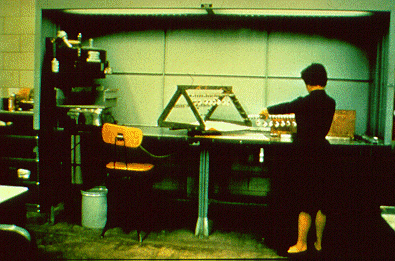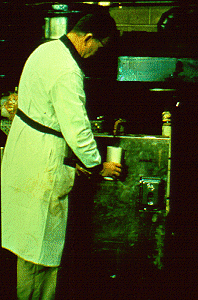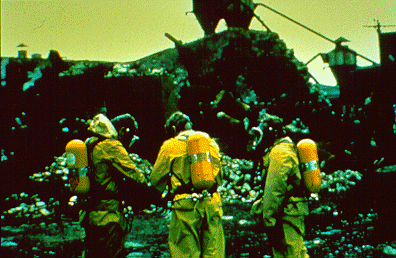Occupational Dermatoses
NOTE: This page is archived for historical purposes and is no longer being maintained or updated.
Slides 106 to 110
Slide 106 - Hood

Less elaborate devices can be used to control the workers' environment. A hood can draw airborne contaminants away from the worker minimizing potential hazards.
Slide 107 - Proportional pump dispenser

An automatic proportional dispenser can be used to avoid contact with a primary irritant. Experience shows that small plants usually depend more upon less expensive personal hygiene measures than extensive environmental controls.
Slide 108 - Wash Basin
This photo was removed due to privacy concerns.
Workers should be furnished means of keeping clean at work if they are to reduce the amount of contact with harmful agents. Inconveniently located wash areas invite undesirable practices as washing with solvents, mineral oils or industrial detergents.
Slide 109 - Worker washing hands
This photo was removed due to privacy concerns.
Providing the right cleansers is also important. Powdered soap and waterless cleansers are popular because they remove greases, tars, paints and some plastics quite easily. But if such cleansers contain an excess of alkali or solvents, they can damage the skin.
Slide 110 - Protective gear

Personal protective equipment should be carefully matched to the job requirements. In a particularly hazardous environment, such as this chemical dump site, elaborate personal protective devices are necessary.
- Page last reviewed: January 5, 1998 (archived document)
- Content source:
- National Institute for Occupational Safety and Health Health Effects Laboratory Division (HELD)


 ShareCompartir
ShareCompartir